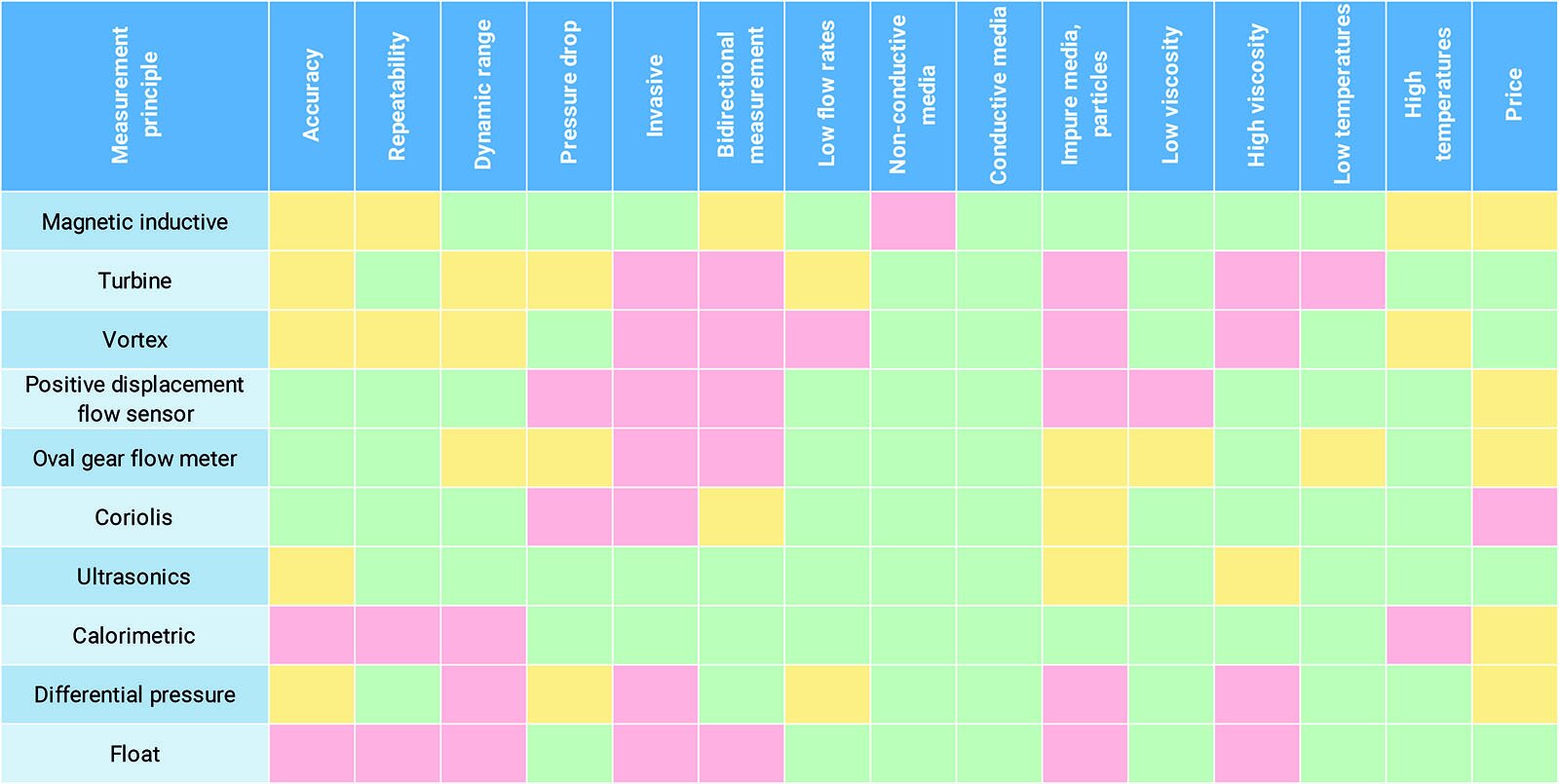Measuring Principles of Flow Sensors


A large number of different measuring principles apply to the area of flow measurement. In general, these can be distinguished between according to mechanical or electronic principles. It is also possible to differentiate between invasive and non-invasive active principles, i.e. those which “intervene”, or do not intervene, in the medium to be measured.
Each measurement principle has advantages for certain applications but also disadvantages compared with the others. Unfortunately, there is no “absolutely perfect solution” which works optimally for every application. A magnetic inductive flow sensor is suitable for the measurement of aqueous media, for example, but its physical principle of action means that it is not suitable for electrically non-conductive media such as oil, etc.

A further distinguishing feature is the measured variable that is detected during the measurement. In this context, with a magnetic inductive flow sensor or a Vortex flow sensor, the flow rate of the medium is measured and converted into a volumetric flow. A positive displacement flow sensor counts incremental volume elements and adds them up. A Coriolis counter determines the mass flow and with knowledge of the density of the fluid, can convert it into a volumetric flow.
The following overview highlights the advantages and disadvantages of some of the standard measuring principles.

Find out more about the functionality and advantages of our turbine, Vortex and magnetic-inductive flow sensors, as well as our positive displacement flow sensors.